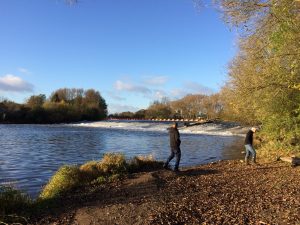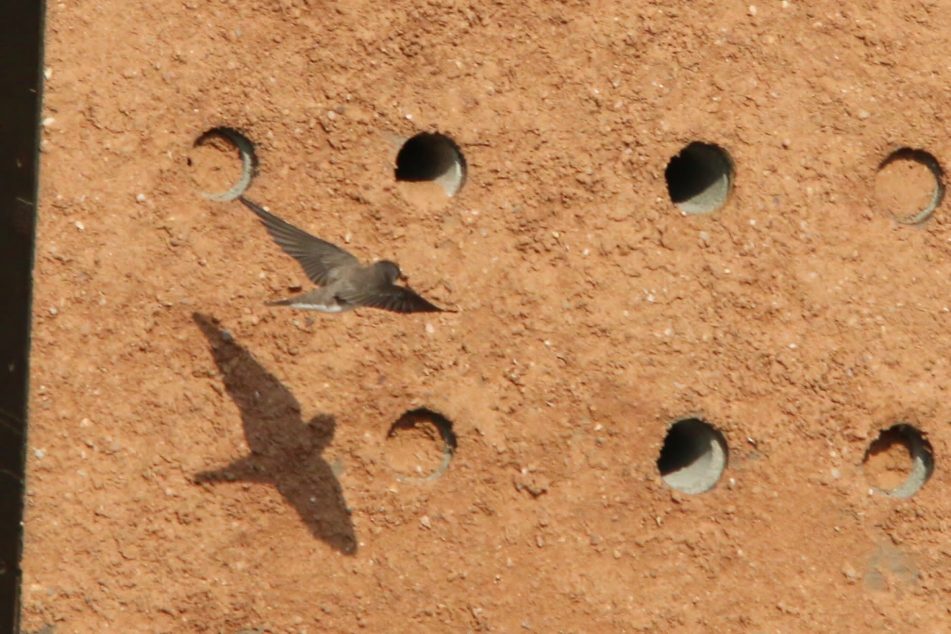
A couple of months ago we told you about a new sand martin project we were working on, with the help of Worcester and Malvern RSPB, Worcester Environment Group and Unlocking the Severn volunteers. The plan was to build and install a new colony nesting box on Diglis Island. Well we have some exciting updates to share!
Waterways Environment Apprentice, Aaron, was leading the sand martin project. In this blog he takes us through the project from start to finish, and shares the exciting updates we have already had from the nesting box.
Diglis Basin Sand Martin Population
When I first started on the Unlocking the Severn project, I was approached by Canal & River Trust volunteers and by Malvern and Worcester RSPB volunteers who raised the idea of creating an artificial sand martin box. The local population of sand martins nested in flood outlet tubes in Diglis Basin. This meant that a flood during nesting season could devastate each year’s brood of chicks, as well as potentially impacting the adults. The plans were set in motion to design and build the artificial sand martin box to create a safe nesting space for this population of sand martins.
The Design and Build
Several months of planning went into designing the box. We needed to make sure that it was strong and durable, above the flood plain and created with the sand martins needs in mind. After some deliberation we decided to use a premade sand martin nest tube (supplied from www.wildcare.co.uk) and create two lattice frameworks to slot the tubes into. Building box took around 50 hours of volunteer hard work. A huge thank you to all the volunteers at Worcester Environmental Group, especially Jonathan, who did the large majority of the build.
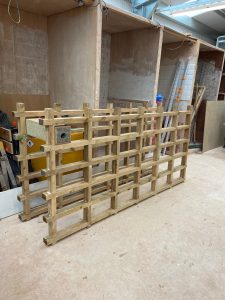
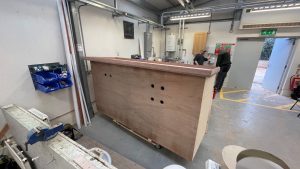
Once it was built, the next job was getting it onto Diglis island. It took 8 volunteers and all their might to carry it over the two lock gates, but we succeeded. The first day of building the frame for the box to site above the flood level was called off early because of the rain, but we came back at it on day 2 and finished off the frame to secure the box in place.
I spent a day covering the front of the box with sand to resemble a sand bank. Then the following day a team of 8 volunteers lifted the box onto the framework and secured it down. Only 3 weeks later, the box was seeing some interest from the recently migrated sand martins.
They’re Here!
As I drove along Diglis Dock Road, I stopped to have a look in the basin as there had been reports of sand martins in the area and indeed, they were here. I was excited to see them darting round the basin catching insects on the wing but I was a little disappointed to see them returning to their nest holes in the flood outlets tubes. I decided to have a look across the bank at the colony box and to my surprise the front of the box was a hive of activity, sand martins everywhere, going in and out of the tubes. To say I jumped with joy would be accurate.


Sand martins colonise the nesting box. Photos by Simon Evans.
For the following few weeks, the box was under daily observations by RSPB volunteers, myself and many fascinated members of public walking along. We were certain the box was being used by the sand martins. They’re captivating to watch on a sunny day, swooping with incredible agility and chirping to each other as they go. In the past few days, working with trained and qualified volunteers from the local RSPB group, we removed the back of the box and inspected the nest tubes. Of which, 8 chicks were found, 4 were ringed. 3 other tubes had eggs in a nest and several other tubes had nesting material.
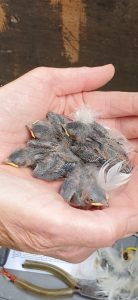
Chicks are carefully ringed by RSPB staff and volunteers. Photo by Simon Evans.
The box has been a huge success and I want to say a huge thank you to all those involved. Volunteers from Malvern and Worcester RSPB and volunteers from Worcester Environmental Group, without your hard work this amazing project would not have been possible.
The future
We plan to observe and ring the remaining chicks from this years brood and keep observing the box over the nesting season.
After this years success, I am hoping to improve and upgrade parts of the box to further increase the numbers of chicks and nests year on year. I would like to put nest cams in several of the nesting tubes to get some footage of the nests next season.
We will keep you posted with updates about the chicks and the box on our social media channels. Follow us on Twitter, Facebook and Instagram @SevernUnlocked.


